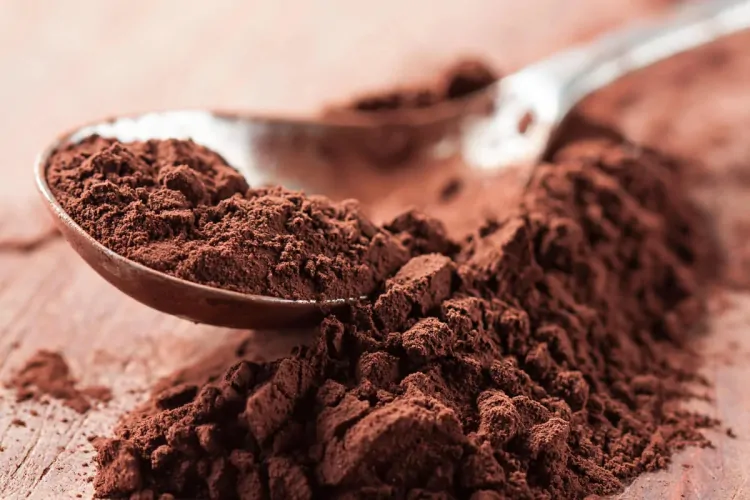The Science Behind Cocoa Powder: How to Choose the Best Quality for Your Recipes
Cocoa powder, a staple in many kitchens, is integral to baking and cooking, contributing rich flavors and colors to various recipes.

Cocoa powder, a staple in many kitchens, is integral to baking and cooking, contributing rich flavors and colors to various recipes. This fine powder, derived from cocoa beans, has a complex profile that influences the taste and texture of baked goods. Understanding the science behind cocoa powder helps you choose the best quality for your recipes and ensures you get the most out of your culinary creations.
What Is Cocoa Powder?
Cocoa powder is made from cocoa beans, which are fermented, dried, roasted, and then ground. The process involves separating the cocoa solids from the cocoa butter. The remaining solids are then processed into a fine powder. This powder can be classified into two main types: natural cocoa powder and Dutch-processed cocoa powder.
Natural Cocoa Powder is made from cocoa beans that have been roasted and ground, retaining their natural acidity. It is known for its strong, sharp chocolate flavor and is often used in recipes that include baking soda.
Dutch-Processed Cocoa Powder, also known as alkalized cocoa powder, has been treated with an alkaline solution to neutralize its acidity. This process gives it a darker color and a smoother, more mellow flavor. It’s commonly used in recipes that call for baking powder, as it does not react with baking soda.
Choosing the Best Cocoa Powder
When selecting cocoa powder, several factors determine its quality, including its flavor, color, and processing method. Here's how you can make an informed choice:
1. Flavor Profile
The flavor of cocoa powder can range from mildly sweet to intensely bitter, depending on its processing. High-quality cocoa powder will have a rich, robust flavor without being overly bitter. When selecting cocoa powder, consider the flavor profile that best suits your recipe. For a more intense chocolate flavor, opt for premium quality cocoa powder, which may be found online or in specialty stores.
2. Color and Appearance
Cocoa powder comes in various shades, from light brown to deep red or dark brown. The color often indicates the processing method and the cocoa beans' origin. For instance, Dutch-processed cocoa powder is usually darker and has a more subdued flavor compared to natural cocoa powder. The appearance of the cocoa powder should be fine and free of lumps, indicating proper processing and storage.
3. Processing Method
As mentioned earlier, cocoa powder can be natural or Dutch-processed. If a recipe specifies one type, it’s important to use it to achieve the intended chemical reactions and flavors. Dutch-processed cocoa powder works best in recipes using baking powder, while natural cocoa powder pairs well with baking soda.
How to Use Cocoa Powder in Baking
Cocoa powder is a versatile ingredient that can be used in various baking recipes, including cakes, cookies, and brownies. Here are some tips for incorporating cocoa powder into your baking:
1. Measuring Accurately
When using cocoa powder, measure it accurately to avoid altering the recipe's balance. Cocoa powder can be dense, so it's best to spoon it into a measuring cup and level it off rather than scooping it directly.
2. Sifting Cocoa Powder
To ensure even distribution and prevent clumping, sift cocoa powder before adding it to your dry ingredients. This step helps incorporate the powder smoothly into your batter or dough.
3. Balancing Flavors
Cocoa powder can be quite strong, so balance its flavor with other ingredients. For instance, adding a bit of sugar can counteract bitterness and enhance the chocolatey taste. Adjust the sweetness based on your recipe and personal preference.
Popular Cocoa Powder Brands in Pakistan
In Pakistan, various brands offer high-quality cocoa powder. Brands such as Baqa Foods provide a range of baking products, including cocoa powder, that cater to diverse culinary needs. Their cocoa powder is known for its rich flavor and fine texture, making it a popular choice among bakers. You can also find other essential baking ingredients such as baking powder and gelatin powder from local suppliers, which are crucial for achieving the desired results in your recipes.
Storing Cocoa Powder
Proper storage of cocoa powder is essential to maintain its freshness and flavor. Store cocoa powder in an airtight container in a cool, dry place away from sunlight. Proper storage helps prevent moisture absorption, which can lead to clumping and spoilage. It’s also important to consider the price of cocoa powder and other baking essentials when shopping, ensuring you get quality products at a fair rate.
The Impact of Cocoa Powder on Health
While cocoa powder is often associated with indulgent treats, it also has potential health benefits. Cocoa powder is rich in antioxidants, particularly flavonoids, which have been linked to various health benefits, including improved heart health and cognitive function. However, it's important to consume it in moderation, especially when used in sugary recipes.
Conclusion
Understanding the science behind cocoa powder and how to choose the best quality for your recipes can greatly enhance your baking experience. Whether you prefer natural or Dutch-processed cocoa powder, selecting a high quality food products in Pakistan will ensure rich flavor and perfect results. For those seeking premium cocoa powder and other baking products, exploring reputable brands and suppliers in Pakistan, such as Baqa Foods, can provide you with the best options available. By following these guidelines, you can achieve delicious, chocolatey treats that stand out in taste and quality.
What's Your Reaction?















